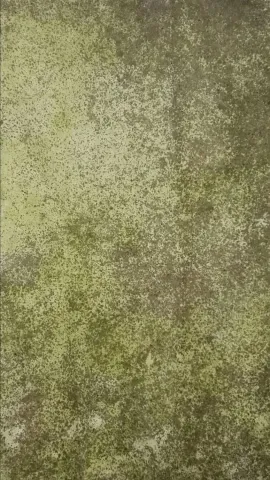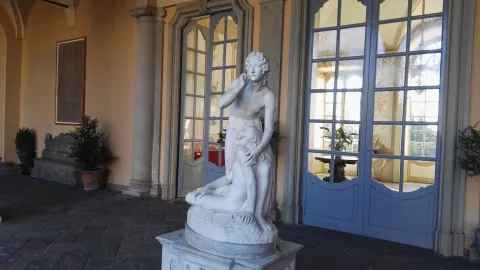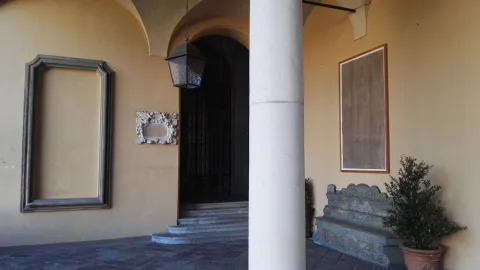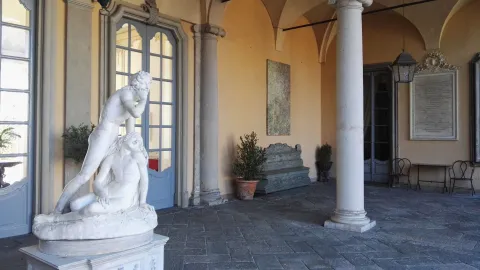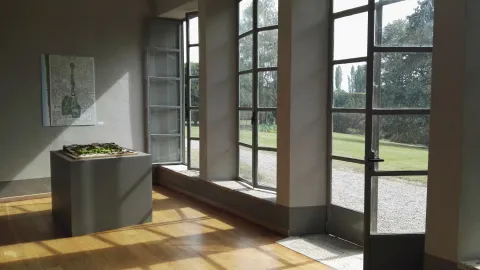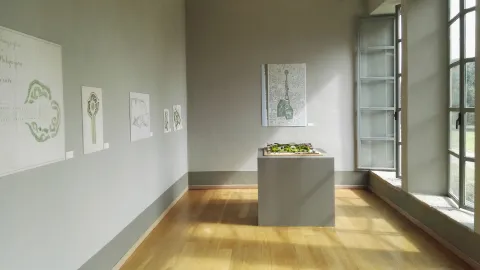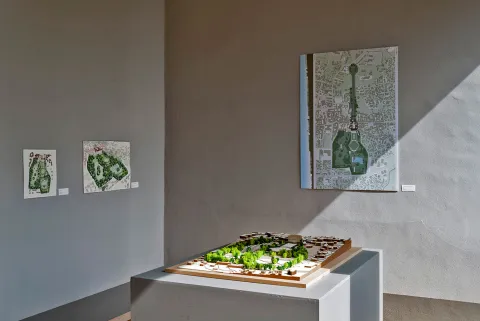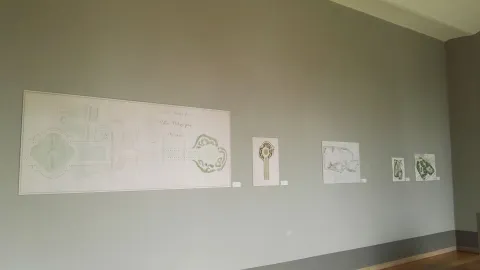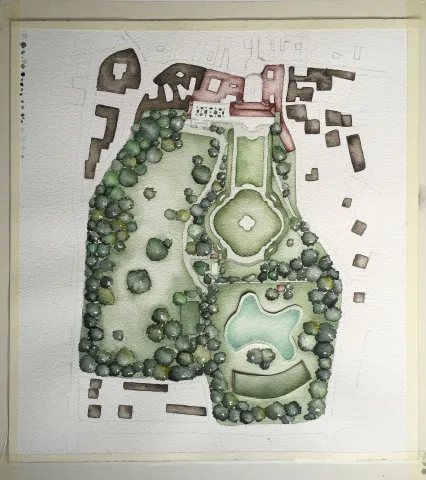Sincronie at Villa Belgiojoso Brivio Sforza, 2016
Fondazione Brivio Sforza once again opens the doors of Villa Belgiojoso in Merate to art and the public, presenting the second edition of the interdisciplinary artist residency project. Through a series of site-specific commissions, the project brings into contemporary relevance the cultural vocation of one of the most important and evocative noble residences in Brianza.
The "Sincronie" project, curated by Carlotta Testori, aims to continue from the previous edition, maintaining a focus on contemporary elements. It builds on two fundamental principles: first, interdisciplinarity, understood as an exchange and comparison between creatives from different fields; and second, the fusion of the old and the modern, not in opposition, but through the harmonious integration of new creative energies within a context that has long been home to all the arts.
In addition to supporting artistic research, the Fondazione Brivio Sforza also aims to preserve, catalog, and study the precious family archive, which is a constant source of inspiration for today's artists. The Foundation invites artists visiting the estate to explore the archive, offering a contemporary reinterpretation of this collection of historical testimonies.
For this second edition, artist Luca Vitone (1964, Genoa) and architect Marco Palmieri (1969, Naples) have been invited to imagine a custom path. Both have been asked to draw inspiration from the gardens surrounding the Villa and their history. The result is a group of site-specific works, the heart of an exhibition that will feature the new pieces alongside archival materials—never before shown to the public—that inspired them. The exhibition takes place in the limonaia, or winter garden, an area used to house plants sensitive to winter frost, with its glass windows overlooking the romantic garden.
The park of Villa Belgiojoso encompasses several gardens created over the centuries: a 17th-century Baroque garden, an 18th-century Italian-style garden, and a Romantic-era garden. Fondazione Brivio Sforza's archive contains extensive documentation regarding the transformation of the gardens over time. Drawings, watercolors, and original prints from the past contrast with the synthesis provided by the current state of the architecture.
This documentation serves as the starting point for Luca Vitone and Marco Palmieri to create a contemporary dialogue on the Villa’s garden, which, with its current blend of styles, provides a valuable opportunity to reflect on the landscape. Landscape is viewed as a key to understanding changes in the way we live and interpret the environment around us. The landscape changes in response to new worldviews, and humankind alters the external landscape to align it with their inner landscape.
Luca Vitone
Luca Vitone has created a work in the park and a diptych in the interior spaces of the villa. Luca Vitone's artistic practice focuses on the idea of place and invites us to re-know something that we already know, challenging the conventions of the fading and faded memory that characterises the present time. His work explores how places identify themselves through cultural production: art, cartography, music, food, architecture, political associations and ethnic minorities. Vitone resolves the gap between the sense of loss of place that accompanies postmodernism and the ways in which the feeling of belonging arises from the intersection of personal and collective memory, and reconstructs and invents forgotten paths that are recomposed into his own personal geography. Vitone will tune into the atmosphere of Villa Belgiojoso by involving his wife Loredana Gintoli, a baroque harpist, who will perform unpublished music composed by the Prince of Belgiojoso together with soprano Anna Carbonera. Their performance will subsequently be the sonorous contribution to the opera in the villa's park: a symbolic encounter between the history of Villa Belgiojoso and the natural dimension that hosts it.
Marco Palmieri
Marco Palmieri, who conducts an all-round investigation into spatiality by declining it in art, architecture, photography, and museum layouts, has realised a landscape intervention project on an area of the park. The work is presented by means of a maquette, a synoptic table and two watercolour drawings inside the Limonaia, accompanied by reproductions of the old plates of the various landscape interventions on the villa's garden, with engravings by Marc'Antonio Dal Re and drawings by Giuseppe Pollack. Palmieri's design intervention refers to the portion of the garden consecutive to the Baroque garden which, according to his project, would overhang a small lake, created following phyto-purification principles. This new landscape articulation is conceived by imagining the sequence of a water basin, like a natural mirror in which the sky and infinity are reflected, whose topsoil would create a subsequent artificial hill, containing a number of rooms where present and future works of the collection belonging to the Brivio Sforza Foundation could be housed. The basic idea is to reinterpret the garden according to contemporary canons, inserting itself in continuity with the creations of the past and, at the same time, tracing a new destination of use consistent with the vocations of the place.


